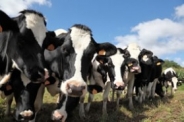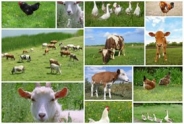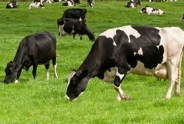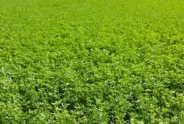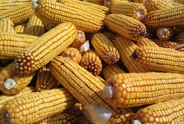Harvesting Winter Triticale Silage
Bill Verbeten, Field Crops
Northwest New York Dairy, Livestock & Field Crops

While the harvest of winter triticale silage is still a month away for most farms it's important to review what it takes to make high quality silage from this crop. Hopefully enough nitrogen fertilizer was put on at green-up (see Feb 2013 AgFocus article) to ensure high yields of 3-4 tons of DM per acre. Harvesting at the flag leaf growth stage, wide swathing, tedding, ensiling the same day as cutting, and applying a homolactic bacterial inoculant will enable NWNY farmers to put up winter triticale silage (and other small grain silages) that rivals haylage in forage quality.
Field Operations
Winter triticale harvest should happen about a week before the first haylage harvest since winter small grains start spring growth sooner than alfalfa and grasses. There will be about a 5-to-10 day window to harvest winter triticale once it reaches the flag leaf growth stage, Feeks Stage 9 (Figure 1). The seed head will still be in the stem, somewhere between half and three-quarters of the way up the stem. Once the seed heads are visible at the top of the stem the triticale has reach boot stage, Feeks Stage 10 (Figure 1), and forage quality will start to rapidly decline. Winter triticale will still make a great feed for heifers and dry cows and will continue to increase in tonnage up to the late boot stage if rain delays the harvest on some fields. Cutting the triticale low (1 inch or less) at these growth stages usually prevents any regrowth.
Laying the triticale in as wide of a swath as possible when cutting will increase the drying speed for the first 3-4 hours. The swaths should then be tedded after this initial drying time to expose the bottom and inside of the swaths to the sun and wind since only the outer ¾ inch of swath dries quickly. It is very important to SLOW down when tedding. Some farmers have learned this the hard way by literally tearing their tedders apart in the field by trying to move the 10-12 tons per acre of wet triticale silage too quickly. An even layer without large clumps should be present across the field after tedding. Conditioning small grain silage has not helped increase drying time in NY. The breaking of alfalfa stems generally helps hay crops dry quicker in the second or third day of drying.
Ensiling
Winter triticale silage should be put in the bag or bunker the same day as harvest if possible. Laying a wide swath and tedding will greatly reduce the silage moisture, especially on sunny and windy days. Even with lower dry matter silages (~30% DM), same-day ensiling has generally reduced the occurrence of butyric (black/slimy) layers in the silage. Initial research has shown that as the temperatures fall overnight, respiration (micro-organisms breaking down the silage into CO2) increases and leads to more spoilage. Inoculating with a homolactic bacteria can also help improve fermentation and decrease spoilage. Area farmers have had success using a number of different products for inoculation of winter triticale silage.
Contact Bill Verbeten at 585-313-4457 or wdv6@cornell.edu if you have further questions about harvesting winter triticale or other small grain silages.
Figure 1: Winter Triticale Growth Stages (pdf; 115KB)
Upcoming Events
Cornell Cow Convos Podcast- Episode 8 Release
April 25, 2024
Cornell Cow Convos-Episode 8

